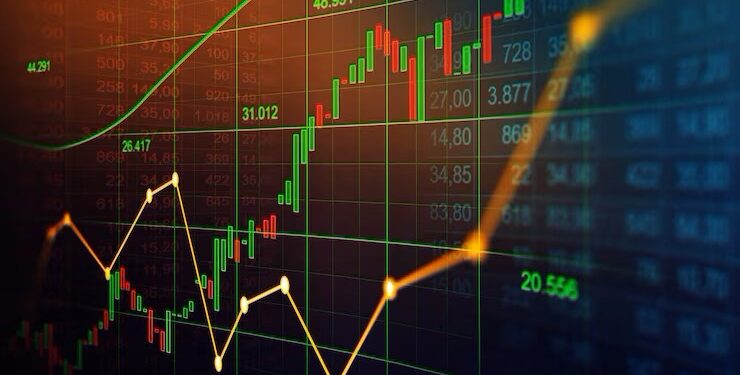In 2024, African stock markets delivered a strong performance, with most indices across the continent experiencing significant growth.
Notably, over ten key African indices closed the year in the green, with eight of them boasting impressive year-to-date gains of over 20%.
However, this optimism coexisted with significant macroeconomic challenges.
In West Africa, Nigeria contended with bank recapitalization, Ghana navigated the complexities of political elections, and Ivory Coast faced setbacks in cocoa harvesting.
Eastern Africa saw weakened economic growth projections in countries like Kenya and Uganda, coupled with a subdued fiscal outlook for 2024-2025, which likely reduced investment sentiment.
Southern Africa grappled with significant challenges, including a severe drought in the third quarter that disrupted agricultural output in South Africa, Zambia, and Malawi.
In contrast, Northern Africa saw a more positive trend, as countries like Tunisia and Morocco implemented interest rate hikes late in the year to encourage greater investor participation.
Despite varying macroeconomic conditions, African stock exchanges demonstrated remarkable resilience, buoyed by the robust performance of individual stocks.
Here are the top five African markets, represented by their indices, that led the way in 2024.
5. BRVM Composite Index
The Bourse Régionale des Valeurs Mobilières (BRVM) Composite Index, which represents the stock markets of the West African Economic and Monetary Union (WAEMU) region, secured the fifth position with an impressive 29% year-to-date growth in 2024.
Starting at 177.69 points, the index broke the 200-point barrier in August and ended 2024 at 229 points.
This performance was likely driven by a significant surge in global cocoa prices, which may have boosted investor confidence in Ivory Coast.
Additionally, Senegal’s economic recovery, reflected in increased bank lending, likely contributed to the positive momentum.
4. Kenya’s Nairobi All Share Index
Kenya’s Nairobi All Share Index earned the fourth spot on the list, achieving an impressive 33.7% year-to-date increase in 2024.
The index opened the year at 91.47 points and faced a challenging mid-year period marked by slower economic growth. GDP expanded at a modest 4.6% year-on-year in the second quarter, down from 5.6% growth during the same period the previous year.
Despite these headwinds, the index demonstrated resilience, rallying strongly in the latter part of the year to close at 123.48 points by December.
3. Nigeria’s All Share Index
Nigeria’s All Share Index claimed third place with an impressive 37.7% year-to-date performance in 2024, showcasing the resilience of Africa’s largest economy.
The index started the year at 74,773 points and gained significant early momentum, surging past the 101,000-point mark in the first quarter.
However, mid-year challenges arose, primarily due to pressures from recapitalization efforts in the financial sector, which weighed on investor sentiment. As a result, the index dipped to 96,580 points by August.
Despite these hurdles, the index showed remarkable resilience, rallying strongly in the third quarter to close the year at an impressive 102,000 points.
2. Zambia’s Lusaka All Share Index
Zambia’s Lusaka All Share Index (LASI) secured the second spot with an impressive 44.1% year-to-date performance in 2024.
The index began the year at 10,828.18 points and experienced robust growth, climbing steadily to reach a peak of 16,200 points by October.
This strong performance came despite major challenges, including a severe drought that hurt agriculture and slowed GDP growth to 1.9% in the first half of the year, down from 4.3% in the same period the year before.
Despite these headwinds, the market retained most of its gains, highlighting strong investor confidence.
1. Ghana’s GSE Composite Index
Ghana’s GSE Composite Index claimed the top spot with a remarkable 56% year-to-date growth, marking its best performance since 2013.
This impressive achievement was likely driven by a $3 billion IMF bailout to stabilize the economy, a surge in global cocoa prices boosting export revenues, and strong positive investor sentiment.
The index began the year at 3,310.23 points and gained steady momentum, reaching a peak of 4,603.16 in August. Although it experienced a slight dip later in the year to 4,300, the index rebounded to close at 4,488.53 by December.
















